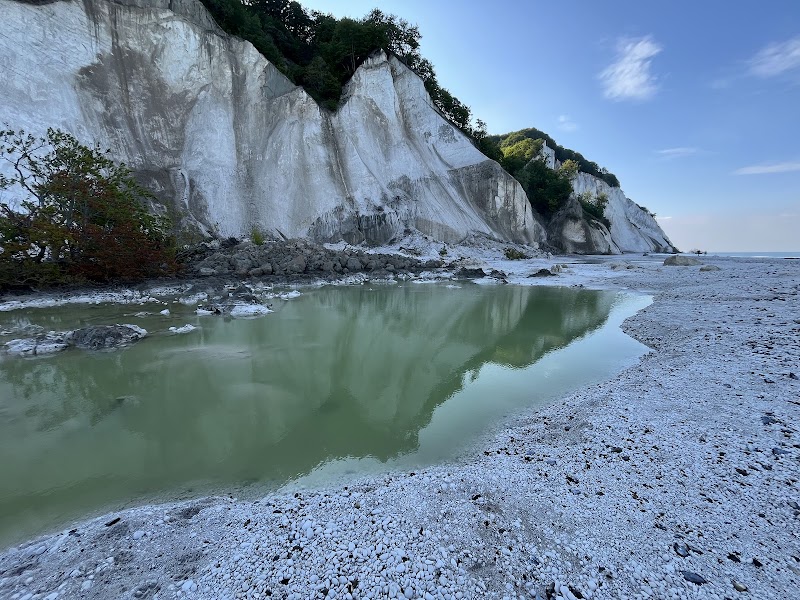
Exploring Peenemünde Museum Open Days: History Meets Adventure on Germany’s Baltic Coast
Peenemünde Museum Open Days offer an intriguing blend of history and adventure on Germany’s Baltic coast. Explore historic rocket test sites, hike scenic trails, and experience firsthand the natural forces that shape this unique peninsula.
Wear Waterproof Hiking Shoes
Sandy and occasionally damp trails demand footwear that keeps your feet dry and supports you over uneven ground.
Carry Adequate Water
The Baltic wind can dehydrate you quickly; bring at least 1.5 liters per person for the 5 km circuit.
Visit Mid-Morning
Arriving between 10 AM and noon maximizes daylight and warmth, making museum tours and trails more comfortable.
Prepare for Wind
The open coastal areas can be very windy; bring a windbreaker or layered clothing to shield against sudden gusts.
Exploring Peenemünde Museum Open Days: History Meets Adventure on Germany’s Baltic Coast
Peenemünde, a remote peninsula on the Baltic Sea coast in Mecklenburg-Vorpommern, hosts an event that combines history, technology, and a touch of adventure during the Peenemünde Museum Open Days. Set against the backdrop of the cold, restless waters and windswept dunes, the open days invite visitors to immerse themselves in one of the 20th century’s most significant scientific sites without sacrificing the raw edge of nature surrounding it.
The museum, housed in the former army research center where early rocket technology emerged, comes alive during these open days. Expect to cover around 5 kilometers of roughly even terrain peppered with forested paths and open seaside trails. The ground underfoot shifts from sandy tracks, where tiny grains seem to resist your boots’ progress, to compact earth beneath pines whose branches creak with the offshore breeze. The elevation gain is minimal, about 30 meters at most, making it accessible to casual walkers and seasoned adventurers alike.
The event’s core offer lies in guided tours around historic test stands and laboratories—structures fiercely standing, weathered by decades but refusing to fade quietly. Exhibits focus on the V-2 rocket development and dissect the controversial past with straightforward honesty, further enhanced by interactive installations that invite you to engage rather than simply observe.
Hydration is crucial; the Baltic wind will push you forward but also drain your strength faster than you notice. Footwear should be sturdy but flexible—water-resistant hiking shoes strike a good balance, as occasional morning dew and Baltic mist dampen the ground. Timing your visit in the late morning avoids the chill’s sharpest bite and catches the area’s light shift from muted grays to sunlit highlights.
Beyond the museum, trails lead to hidden vantage points where the Peenestrom strait dares you with views stretching toward the island of Usedom. The wind sweeps across open fields here with a certain attitude, reminding you that this landscape holds stories of human triumph and nature’s persistent claim.
Whether you are drawn by curiosity about rocket history or the quiet challenge of walking through a landscape that witnessed profound change, the Peenemünde Museum Open Days deliver an experience both practical and moving. Plan well, respect the weather’s mood swings, and prepare to meet the past face-to-face, framed by a Baltic coast fiercely itself.
Nearby Trips
All Adventures
Boat Charters
Water Activities
Adventures near Peenemünde, Mecklenburg-Vorpommern
Discover the unique and memorable adventures that make Peenemünde, Mecklenburg-Vorpommern special.
Frequently Asked Questions
Are the Peenemünde Museum Open Days suitable for families with children?
Yes, the open days cater to a wide audience including families. The terrain is mostly flat and manageable, and interactive exhibits help engage younger visitors. However, parents should supervise around historic structures.
Is photography allowed inside the museum and on the test stands?
Photography is generally allowed outdoors and at specific exhibits, but certain indoor areas may restrict flash or tripod usage. Check with museum staff upon arrival for any limitations.
What transportation options are available to reach Peenemünde?
The closest city, Wolgast, offers regional train and bus connections. From Wolgast, local buses or cycling routes lead directly to Peenemünde. Parking is available but limited during peak open days.
Are there any off-the-beaten-path viewpoints to see during the open days?
Yes, a lesser-known hill behind the northern test stands provides sweeping views over the Peenestrom strait, offering a quieter spot away from crowds.
What local wildlife might I encounter during my visit?
You may spot sea eagles gliding above the coast, marsh harriers hunting over nearby wetlands, and hardy coastal flora resilient to the salty air.
How should visitors approach the sensitive historical aspects of Peenemünde?
The museum presents history with respect and honesty, acknowledging the complex legacy of wartime research. Visitors are encouraged to consider both technological advances and human cost during their visit.
Recommended Gear
Waterproof hiking shoes
Protects feet from damp and uneven terrain to maintain comfort throughout the hike.
Layered clothing
Adapts to changing temps and windy seaside conditions.
Windbreaker jacket
Blocks strong coastal winds that can cool quickly during open days.
Daypack with hydration system
Ensures access to water and storage for essentials without weight strain.
Local Insights
Hidden Gems
- "Northern hilltop viewpoint overlooking test stands"
- "Quiet woodland trail loops east of the museum"
- "Small beach coves with views of passing cargo ships"
Wildlife
- "White-tailed sea eagle"
- "Marsh harrier"
- "Coastal dune orchids"
History
"Peenemünde was the birthplace of the world’s first ballistic missiles during WWII. Today, the museum offers a candid look at the scientific breakthroughs and moral questions tied to its legacy."
